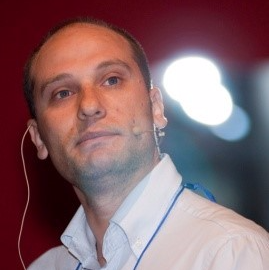Young Researchers in Sulfur/Selenium Chemistry
A special issue of Molecules (ISSN 1420-3049). This special issue belongs to the section "Organic Chemistry".
Deadline for manuscript submissions: closed (30 April 2023) | Viewed by 6063
Special Issue Editors
Interests: selenium chemistry; chemical bonding; weak interactions; DFT; organometallic chemistry; catalysis
Special Issues, Collections and Topics in MDPI journals
Interests: organochalcogen chemistry; green chemistry; C–H bond functionalization; new synthetic methodologies; catalysis; organic synthesis
Special Issue Information
Dear Colleagues,
Synthetic organo-sulfur and -selenium compounds have attracted increasing attention in recent decades. This rising interest is mainly due to the discovery of several S- and Se-containing proteins involved in a wide variety of physiological processes in mammals, such as antioxidant defense and thyroid hormone production. Many organo-sulfur and -selenium compounds have been found to function as antioxidants, antinociceptive agents, AChE inhibitors, antidepressant apoptosis inducers, chemopreventors in several organs, etc. Further, these structural motifs have wide applications in certain reactions as catalysts, ionic liquids, and synthetic intermediates in total syntheses. Another important advancement in this context is the formation of C–S/–Se bonds, which has contributed to the synthesis of a wide range of biologically active molecules and functional materials. Regarding the latter, polymer chemists are incorporating more and more chalcogen-containing units in the backbone of polymers, with interesting effects on their properties. Last but not least, theoretical and experimental chemists are currently involved in the detailed characterization of a weak interaction called “chalcogen bond”, adding a precious tool to catalyst designers and crystal engineers.
Many other examples could be added, demonstrating that these two fascinating elements are heavily involved in all the frontiers of modern chemistry.
In this context, several young researchers are working in the area of sulfur and selenium chemistry and have contributed to several important discoveries. Considering this, the goal of this Special Issue is to provide the young scientific community with the possibility to show their recent advances in organo-sulfur and -selenium chemistry from all chemistry-related fields. We cordially invite researchers to join this Special Issue and submit original research or review articles, short communications, and perspective articles.
Prof. Dr. Gianluca Ciancaleoni
Prof. Dr. Jamal Rafique
Guest Editors
Manuscript Submission Information
Manuscripts should be submitted online at www.mdpi.com by registering and logging in to this website. Once you are registered, click here to go to the submission form. Manuscripts can be submitted until the deadline. All submissions that pass pre-check are peer-reviewed. Accepted papers will be published continuously in the journal (as soon as accepted) and will be listed together on the special issue website. Research articles, review articles as well as short communications are invited. For planned papers, a title and short abstract (about 100 words) can be sent to the Editorial Office for announcement on this website.
Submitted manuscripts should not have been published previously, nor be under consideration for publication elsewhere (except conference proceedings papers). All manuscripts are thoroughly refereed through a single-blind peer-review process. A guide for authors and other relevant information for submission of manuscripts is available on the Instructions for Authors page. Molecules is an international peer-reviewed open access semimonthly journal published by MDPI.
Please visit the Instructions for Authors page before submitting a manuscript. The Article Processing Charge (APC) for publication in this open access journal is 2700 CHF (Swiss Francs). Submitted papers should be well formatted and use good English. Authors may use MDPI's English editing service prior to publication or during author revisions.
Keywords
- organoselenium
- organosulfur
- theoretical methods
- organometallics
- organic synthesis
- catalysis
- green chemistry
- material science
- polymer science
- weak interactions







